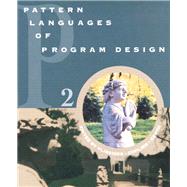
John Vlissides is a member of the research staff at the IBM T. J. Watson Research Center in Hawthorne, New York. He has practiced object-oriented technology for more than a decade as a designer, implementer, researcher, lecturer, and consultant. In addition to co-authoring Design Patterns: Elements of Reusable Object-Oriented Software, he is co-editor of the book Pattern Languages of Program Design 2 (both from Addison-Wesley). He and the other co-authors of Design Patterns are recipients of the 1998 Dr. Dobb's Journal Excellence in Programming Award.
James O. Coplien is a premier expert and writer on the object paradigm and C++, having worked with the language since its inception at AT&T. Currently a member of Bell Laboratories Research at Lucent Technologies, his work focuses on multi-paradigm development methods and organizational anthropology for software development processes. His previous books include Pattern Languages of Program Design (with Douglas C. Schmidt), Pattern Languages of Program Design, Volume 2 (with John M. Vlissides and Norman L. Kerth), and Advanced C++ Programming Styles and Idioms.
Norman L. Kerth is a principal consultant with Elite Systems in Portland, Oregon. He works with companies to ensure their successful transition to object-oriented technology. He includes the wider issues of specification and design activities, quality assurance, continuous process improvement, project management and the building of effective teams.
| Language-Specific Patterns And Idioms | |
| Localized Ownership: Managing Dynamic Objects in C++ | |
| Lazy Optimization: Patterns for Efficient Smalltalk Programming | |
| Partitioning Smalltalk Code into ENVY/Developer Components. | |
| General-Purpose Patterns | |
| Command Processor | |
| Implementation Patterns for the Observer Pattern | |
| Patterns for Encapsulating Class Trees | |
| The Proxy Design Pattern Revisited | |
| Moods: Models for Object-Oriented Design of State | |
| Shopper | |
| Special-Purpose Patterns | |
| Detachable Inspector/Removable: A Structural Pattern for Designing Transparent Layered Services | |
| Design Patterns for Object-Oriented Hypermedia Applications | |
| Organizational Multiplexing: Patterns for Processing Satellite Telemetry with Distributed Teams | |
| Backup Pattern: Designing Redundancy in Object-Oriented Software | |
| Crossing Chasms: A Pattern Language for Object-RDBMS Integration | |
| Transactions and Accounts | |
| Architectural Patterns | |
| Some Patterns for Software Architectures | |
| Reflection | |
| Evolution, Architecture, and Metamorphosis | |
| Process And Organization | |
| Prioritizing Forces in Software Design | |
| Decision Deferral and Capture Pattern Language | |
| Organizational Patterns for Teams | |
| Accountability and Organizational Structures | |
| Episodes: A Pattern Language of Competitive Development | |
| Exposition | |
| Patterns for Classroom Education | |
| Demo Prep: A Pattern Language for the Preparation of Software Demonstrations | |
| A Pattern Language for an Essay-Based Web Site | |
| Concurrent Programming/Distributed Systems | |
| Half-Sync/Half-Async: An Architectural Patte | |
| Table of Contents provided by Publisher. All Rights Reserved. |
The New copy of this book will include any supplemental materials advertised. Please check the title of the book to determine if it should include any access cards, study guides, lab manuals, CDs, etc.
The Used, Rental and eBook copies of this book are not guaranteed to include any supplemental materials. Typically, only the book itself is included. This is true even if the title states it includes any access cards, study guides, lab manuals, CDs, etc.